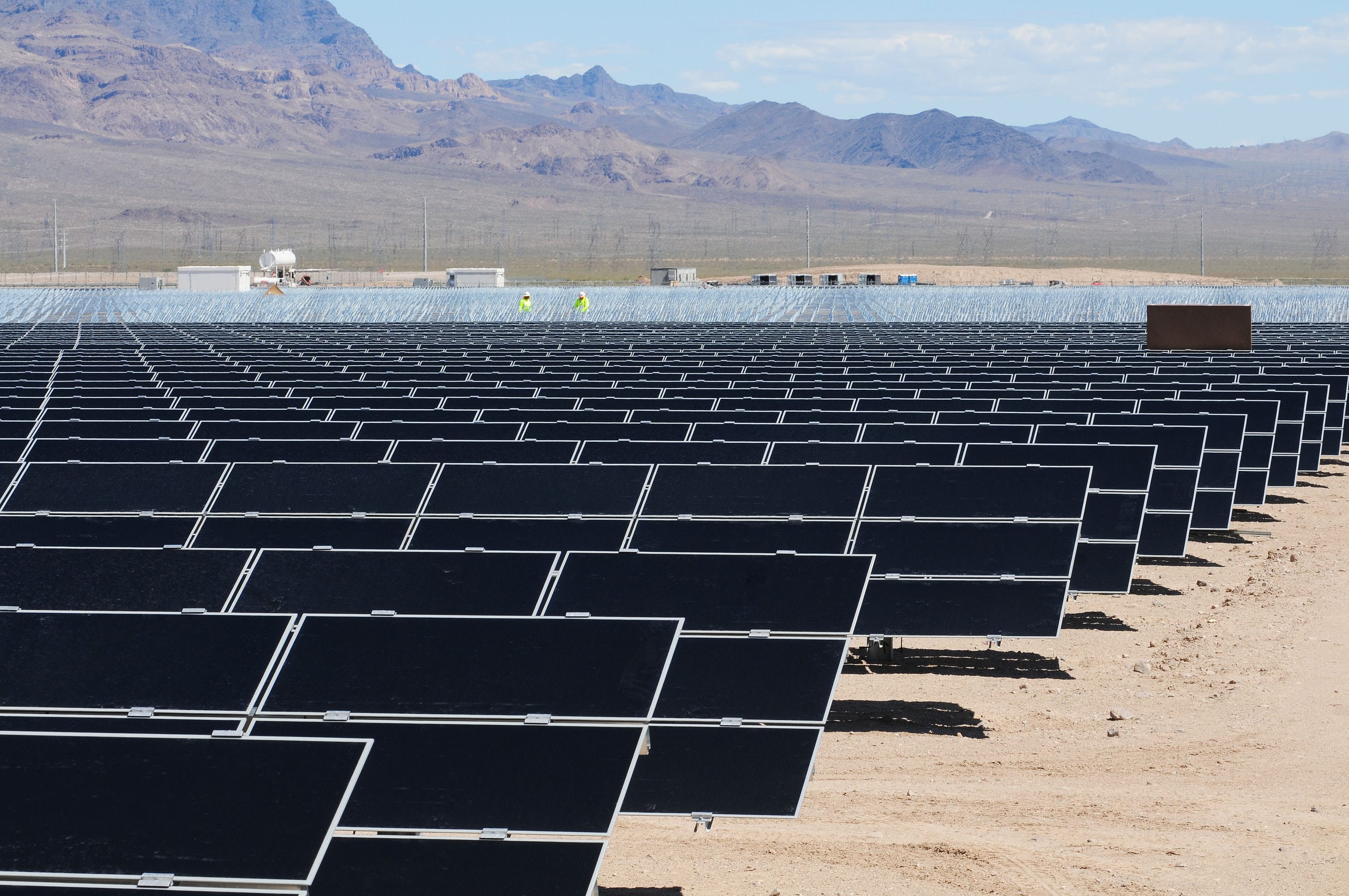Our electricity needs continue to grow and how we generate electricity is changing, as well.
Utility companies are diversifying how they get their electricity, with more renewable sources coming online each year. Burns & McDonnell is the No. 1 engineering and design firm serving the electrical power industry in the United States, according to Engineering News-Record. The company has been involved with more than 5 gigawatts of solar projects over the last 10 years in roles ranging from owner and engineer, development support, and detail design.
One of the major issues Burns & McDonnell help companies solve is connecting new solar power generating plants to the current power grid.

“You have to interconnect the large, utility scale solar to the utilities grid, and there are studies that go along with that and an entire application process that has to be gone through and that’s one of the things that we get involved with,” said Robert Healy, regional business technology solutions group manager for Burns & McDonnell in Phoenix. “They have continuous numbers of people trying to connect to the grid, so they have to study it all of the time. All of these interconnections create congestion on the grid.”
When developers begin looking for land to build a renewable energy production plant on, they have to take a look at how much money it will cost to connect to the grid and if the current grid can handle the increased load.
“If the studies show you have a very expensive interconnection to go through, most of the time that will make the projects not economically feasible,” Healy said.
The cost to connect to the existing grid can prevent some energy producing developments, but Arizona continues to climb up the charts in terms of solar energy production. According to a report by the Solar Energy Industries Association, Arizona added 3,633.9 megawatts of solar generating capabilities in 2018, moving up to No. 3 in the national rankings for solar production. The report stated that Arizona generates 6.66 percent of its electricity from solar, enough to power 544,000 homes.

“Renewable energy in Arizona, and solar in particular, is a very reliable source of energy for us,” said Matt Brinkman, regional energy group manager for Burns & McDonnell. “However, we all know that the sun only shines during the day. That really pushes us toward needing a storage solution and batteries right now are the best and technically viable and most cost effective storage solutions at this time.”
Brinkman said that other states working on increasing their power storage capabilities are benefitting from state-mandated requirements in California. The California Public Utility Commission has required investors in utilities to install batteries. This has created a marketplace for large-scale energy storage and allowed companies to invest in new storage technologies.
“As a result of that, you’ve seen significant cost decreases in battery storage,” Brinkman said. “The issue with batteries is lithium ion is the current best technology. It’s not expected to last the 20 to 30 years that a traditional energy generating asset would.”
Arizona Corporation Commission proposed a clean energy overhaul in January of 2018 that would call for 80 percent of state energy coming from renewable sources and 3,000-megawatt energy storage capabilities by 2030. While those are just goals, it does put storage solutions on the front burner for the industry.
“It’s an exciting time,” Brinkman said. “We’re going to continue to see additional investment and as a result of that research and development, we will see reduced costs and improved efficiency.”
Another trend that Burns & McDonnell work on is the increasing need for charging stations for electrical vehicles.
“These vehicle charging stations require a lot of power and a lot of power quickly,” said Brinkman. “They need high voltage, high amperage, which most of the residential systems aren’t designed for at this time.”
Putting in these new charging stations in the newer parts of the Valley is less of an issue as the power distribution systems are newer and able to handle higher electrical loads. Where the challenges come are installing these charging stations in older parts of the city, like downtown Phoenix.
“An older area of our city was built when our electric usage was much lower,” Brinkman said. “The distribution cables and the distribution system feeding that area would be undersized for what we think about today.
“The issues that you face are you have to either replace the existing infrastructure or add to it in order to meet the modern needs.”




